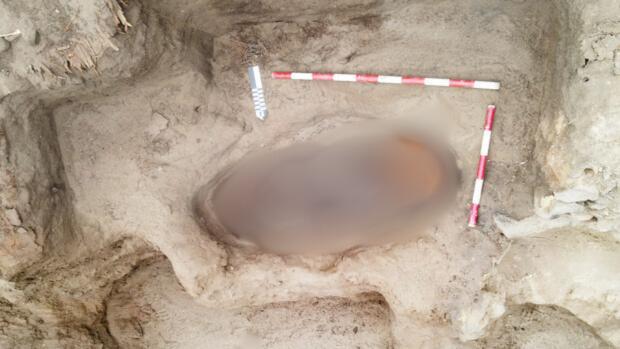
Remains of 5,000-year-old ‘Elite Woman’ Found in Old Peru Dump
In a remarkable archaeological discovery, experts have unearthed the remains of a 5,000-year-old “elite woman” at the ancient city of Caral in Peru. What makes this discovery even more astonishing is that the remains were found in an area that was previously used as a garbage dump for decades. The discovery has shed new light on the lives of the ancient Caral people and their relationships with other civilizations.
According to a recent press release from the Peruvian Ministry of Culture, the remains were discovered in a tomb containing a range of artifacts, including a toucan’s beak, a stone bowl, and a straw basket. These items were showcased to reporters at the culture ministry, providing a unique glimpse into the life and status of this ancient woman.
The discovery was made at the sacred city of Caral, which is located about 200 kilometers north of Lima. Caral is one of the oldest cities in the Americas, dating back to around 2600 BCE. The city was an important center of trade and culture, and its ruins have yielded many significant archaeological finds over the years.
The “elite woman” is believed to have been a member of the Caral elite, a group of individuals who held significant power and influence in the city. Her tomb, which was found in a previously unexplored area of the city, provides a unique window into the lives of these ancient leaders.
The artifacts found in the tomb offer a fascinating glimpse into the daily life and culture of the Caral people. The toucan’s beak, for example, is likely to have been used as a ceremonial object or a symbol of status. The stone bowl may have been used for cooking or serving food, while the straw basket could have been used for storing or carrying goods.
The discovery of these artifacts has also provided new insights into the relationships between the Caral people and other civilizations in the region. The presence of the toucan’s beak, for example, suggests that the Caral people may have had trade or cultural exchange relationships with other groups in the region.
The Caral civilization is believed to have been influenced by a number of different cultures, including the Chavín and the Nazca. The discovery of the “elite woman” and her artifacts has provided new evidence of these interactions and has helped to shed light on the complex cultural heritage of the region.
The discovery of the “elite woman” is a significant find for Peruvian archaeologists and historians. It provides new insights into the daily life and culture of the Caral people and has helped to shed light on the complex relationships between different civilizations in the region.
The discovery was made possible through a collaborative effort between Peruvian archaeologists and international experts. The team, led by Dr. Ruth Shady, a renowned Peruvian archaeologist, has been working at the site for several years, uncovering new evidence of the Caral civilization.
The “elite woman” is just the latest in a series of significant discoveries made at Caral in recent years. In 2009, the site was designated as a UNESCO World Heritage site, recognizing its importance as a cultural and historical treasure.
As the world continues to learn more about the Caral civilization, it is clear that this ancient city holds many secrets waiting to be uncovered. The discovery of the “elite woman” is a significant step forward in our understanding of this fascinating culture and its place in the history of the Americas.






